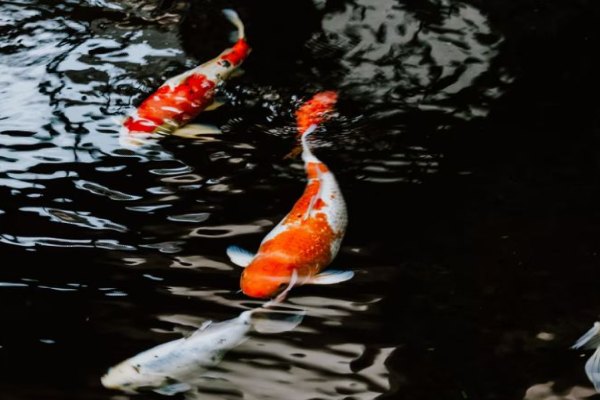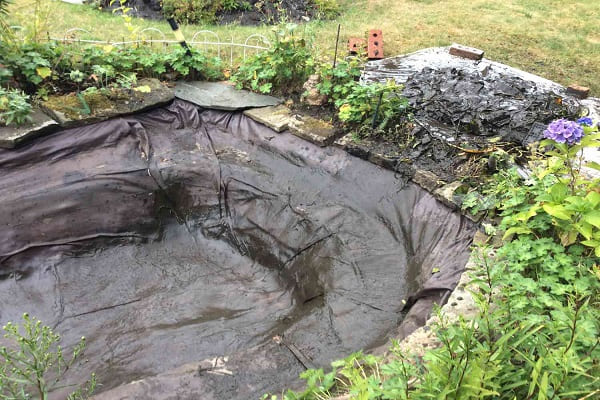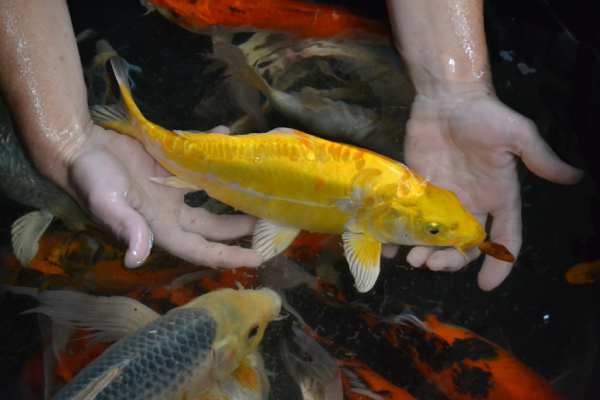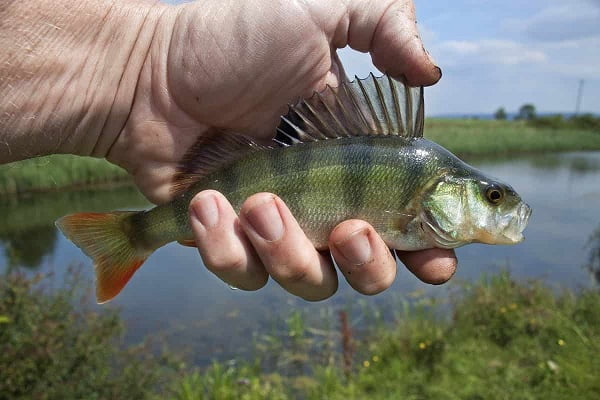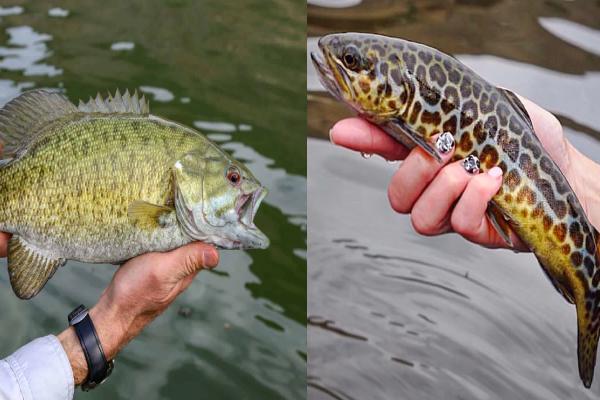Can You Keep Minnows in a Garden Pond? Guide On How To
Are you a pond owner who is skeptical about keeping minnows in your garden pond? Well, you aren’t alone, over 75.5% of pond owners are scared of keeping minnows in their garden pond due to the challenges that come with it.
Maybe you’re scared of keeping minnows due to limited natural food sources, seasonal changes, limited space, maintenance, and upkeep, or you’re afraid of taking up tasks such as cleaning debris, controlling algae growth, and repairing equipment due to the fact that they can be time-consuming and demanding.
But the truth is, despite these challenges, with proper planning, maintenance, and attention to the specific needs of the minnows, you can create a thriving habitat for your minnows in a garden pond setting, and we will show you how in this blog post.
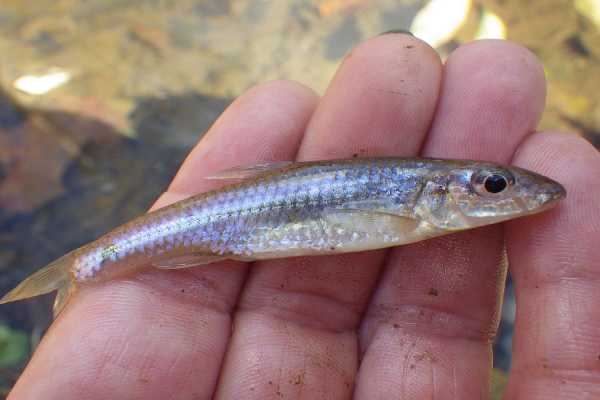
We will also address the popular query, “Can minnows live in a pond?” so keep scrolling. But first, let’s quickly look at the different types of minnows.
Types of Minnows
There are lots of species of minnows, which include;
Mosquito Minnow
Gambusia affinis, also known as the mosquito minnow, is a freshwater fish species in the family Poeciliidae.
They serve as a natural method of mosquito control because they have an insatiable hunger for mosquito larvae.
Mosquito minnows have a streamlined body and a silvery or gray coloration. They only live for about a year or two at the most and can grow to be around two inches long.
Common Minnow
The term “common minnow” refers to a broad category of small, freshwater fish that includes a number of different species.
These minnows can be found all around the world but are most popular in North America, Europe, and Asia as baitfish for anglers.
Common minnows are typically between one and three inches in length. They come in a wide range of colors, some of which are silvery, golden, or olive, and have the capacity to survive in a variety of aquatic environments.
Creek Chub
The Creek Chub, or Semotilus atromaculatus, is a well-liked North American minnow. They prefer rivers and streams with moderate currents, such as creeks.
Creek chubs are elongated fish with a cylindrical body and a color pattern that ranges from olive to brown with dark mottling along the sides.
They can outgrow many other types of minnows by growing to be between six and eight inches in length.
White Cloud Mountain Minnow
White cloud mountain Minnows, also known as Tanichthys albonubes, are well-liked aquarium inhabitants because of their good looks, low maintenance needs, and calm demeanor.
They are thin-bodied and colorful. Males can be easily identified by their vivid hues, such as red or orange fins, while females are generally paler.
Fathead Minnow
The fathead minnow, or Pimephales promelas, is a North American species valued for its baitfish capabilities. They have a small, stocky body, a rounded head, and a mouth at the terminal end.
Fathead minnows range in color from olive to brownish gray, and they have a horizontal black stripe across their bodies.
Fathead minnows are great for ponds and lakes because they reproduce quickly and can be used as a food source.
Now that you have known the different types of minnows, let’s discuss in detail the best type of pond that your minnows can thrive in.
The best pond for minnows
When deciding on the appropriate pond for minnows, it’s vital to think about their reproductive patterns and the quantity of Minnows you want to stock.
Female minnows can lay anywhere from 100 to 200 eggs in just four to five days, making for an extremely rapid reproductive cycle. If not controlled, this situation might easily cause overpopulation.
If bass, catfish, or other minnow-eating fish predominate in your pond, you can safely introduce minnows without fear of an overpopulation issue. As a result of predation by the existing fish species, the minnow population can be kept in check.
However, bringing minnows to a pond that is predominantly used for goldfish or koi may not be a good idea. Minnows aren’t natural prey for koi and goldfish; therefore, they probably won’t eat them.
Your pond may become overrun by the minnow population if nature’s checks and balances aren’t in place. Poor water quality, fish stress, and an unbalanced pond environment are all consequences of overpopulation.
Having a well-thought-out plan for controlling population growth is essential for keeping minnows in a pond with goldfish or koi, and occasionally removing minnows by hand is a good plan to start with.
Benefits of keeping minnows
There are numerous benefits of keeping minnows in a garden pond and it will be discussed in this section.
Natural Pest Control
Minnows are a great natural way to manage insect populations. They will gorge themselves on mosquito larvae, tiny insects, and other pond pests.
Rather than turning to chemical remedies, you can help control the spread of these pests by introducing minnows.
Biological Balance
Minnows play a vital role in maintaining the biological balance of an ecosystem. They are an important part of the natural food chain since larger fish and predatory birds eat them. Adding minnows to your pond can help create a diverse and thriving ecosystem.
Controlling of Algae
Species of minnows, such as the fathead minnow, are known for eating algae. Add some minnows to your pond if you have a problem with algae blooms. They eat the algae, and this helps keep the water clean.
Drawbacks of keeping minnows
While keeping minnows does have its advantages, there are also certain drawbacks you should take into account. Some of the disadvantages of keeping minnows include;
Overpopulation
Because of their rapid reproduction, minnow populations often explode. They can rapidly cause your pond to become overrun if not controlled.
Crowding, stress, and decreased water quality are all consequences of an excessive fish population. You can avoid such problems with consistent population control techniques.
Competition for food
In areas with a high population of minnows, competition for food and other resources can become fierce.
Some fish species may not be able to thrive because minnows outcompete them for food. This can throw the aquatic ecosystem out of whack, threatening the health and diversity of its other inhabitants.
Taking proper care of minnows
To guarantee the health and longevity of the minnows in your pond, you must provide for their specific needs. Read on if you want to provide a healthy habitat for your minnows.
Before introducing minnows to your pond, you should check for predatory fish like bass. There may not be enough time for minnows to spawn if there are many predators around. Make sure that koi and other fish species that are compatible with your pond do not prey on the minnows.
Temperature requirements
Various species of minnows have different temperature ranges in which they thrive. The typical range of optimal temperatures for the common fathead minnow is between 50 and 70 degrees Fahrenheit.
Make sure the water temperature in your pond is appropriate for the type of minnow you intend to keep.
Oxygen circulation
Minnows can only survive in ponds with a high oxygen level. Put in a pump or build a waterfall to keep the water moving and oxygenated. Your minnows will be healthier as a result of this.
Shade
Minnows thrive in milder temperatures, so this is essential. Water lilies and lily pads, as well as surrounding trees, can provide shade and keep the water temperature down.
In addition, if the pond is deep enough, the water temperature can be controlled.
Feeding
Minnows can usually fend for themselves, feeding on algae and insects they discover in their natural habitat but if you do decide to feed them, do so sparingly.
They only need to be fed once a week because they can get all the nutrition they need from the pond’s natural ecosystem.
Be aware of predators
Predators could endanger your minnows. If minnows disappear unexpectedly quickly, beyond what might be expected from predator fish, it’s important to look into the possibility of other predators like heron.
Maintain appropriate pH levels
Keep pond water’s pH stable, as minnows are very sensitive to changes. A pH between 7.0 and 7.5 is ideal for fathead minnows. The minnows could die if the pH level is outside this safe zone.
pH levels should be monitored on a regular basis and adjusted as needed. The pH can be lowered by adding 1/4 cup of vinegar for every 500 liters of water.
After 12 hours, recheck the pH levels to see whether you need to start over. In addition, reducing algal blooms will help keep pH stable and enhance water quality.
Pond’s Overpopulation
Adding predator fish to your minnow pond is a good strategy. The population of minnows can be kept under check by introducing larger fish like bass and bluegill. Predatory fish like this often feast on smaller fish like minnows, which helps keep the environment in check.
You can also use a minnow trap if you’d rather not add any new fish to the ecosystem. These traps are widely available in stores, specialty shops. Bread crumbs, crackers, or even pet food can be used as bait to entice the minnows into the trap.
Keep in mind that minnows make excellent fishing bait, so you can utilize the ones you’ve captured during your next fishing expedition.
What is needed to keep minnows in a pond?
There are a few key considerations when maintaining a pond for minnows. To begin, you’ll need a pond large enough to give the minnows plenty of room to swim around and spawn.
The pond’s water temperature, pH, and oxygen levels should all be appropriate.
Regular monitoring and maintenance of these parameters are necessary to ensure the well-being of your minnows.
Additionally, having a healthy pond is crucial. To accomplish this, a wide variety of aquatic plants, boulders, and other natural structures that provide cover and safety for the minnows can be introduced. The minnows will thrive in a more natural setting with abundant food sources.
Read Also: Can Perch Live In A Pond? Building A Perch Pond
Conclusion
Obviously, the prevalent question “Can you keep minnows in a garden pond?” has been addressed in this blog post.
As you can see in the blog post, the addition of minnows to your garden pond will result in a more beautiful and healthy aquatic habitat.
The pond’s ecosystem benefits from the presence of these hardy fish, which can adjust to a wide range of environmental conditions.
If you follow the guidelines provided in this blog post, you will be able to make your garden pond a nice place for minnows to live and thrive for many years.
FAQs
Yes, minnows can be kept in a pond. They are hardy fishes that do well in a wide range of water conditions, including ponds.
They help in controlling mosquito larvae, contribute to the pond’s ecosystem by cycling nutrients, and provide natural beauty to your pond.
Depending on the size of your pond, you should decide how many minnows to keep. Don’t overcrowd the pond, but a good rule of thumb is 10 minnows for every 100 gallons of water.

